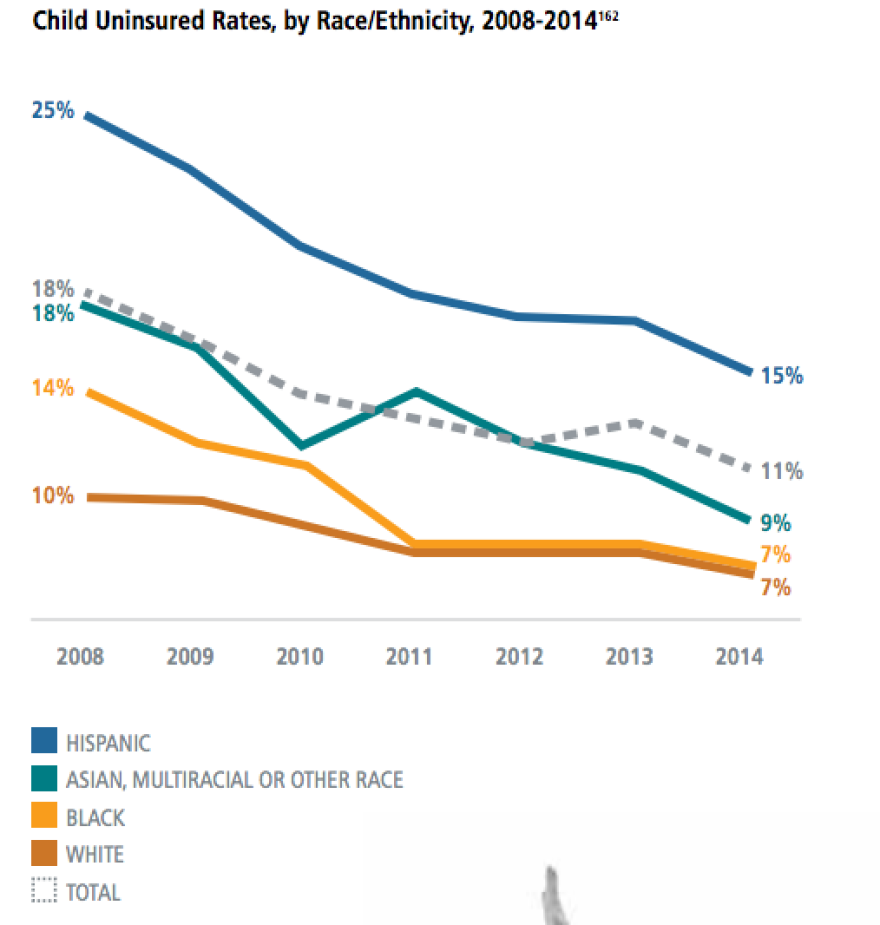There are fewer children in Texas without health insurance these days, but the state still has one of the highest rates of uninsured children in the country. And according to a new study, certain races and ethnicities in the state are more likely than others to be uninsured.
Every year the Center for Public Policy Priorities releases a report looking at how kids in Texas are doing when it comes to things like health, education and poverty, and this year they’re looking at all this through a specific lens. For the first time, the group compared how children of different races and ethnicities in Texas compare along these indicators of well-being. Authors of the study say this kind of research has been greatly needed.
“Often that data is not available or people are hesitant to use that data because they are uncomfortable talking about race,” says Jennifer Lee, a research associate with the Center for Public Policy Priorities. Among other things, the group found when it comes to whether a child has health insurance, race and ethnicity play a big role.
“When you break down the data by race and ethnicity you do see that Hispanic children are the most likely to be uninsured," Lee says.
In Travis County, 15 percent of Hispanic children don’t have health insurance. That’s also the statewide average and one of the highest rates nationwide for Latino children. Compare that to 7 percent of black children in Travis County, 9 percent of Asian children and less then 5 percent of white children here.
“Within the Hispanic child population, there are many more families who are immigrants and are not as familiar with our health insurance systems, which admittedly are very complicated.”

According to the study, about one-third of children in Texas live with one or more immigrant parents. Lee explains that immigrants aren’t always aware of the financial assistance that’s available to them. So, things like the availability of subsidized insurance or Medicaid eligibility go unutilized – though, that’s not always the case. So, Lee says, the state should be actively expanding access to health care across the board, and the best way to do so is to close the Medicaid coverage gap by expanding the program to more adults.
“When the most recent data came out on uninsured rates, we saw that states who decided to expand Medicaid coverage to low income parents saw the uninsured rates improve for children and parents much more than states who decided not to do that.”
The study also found Hispanic and black children were three times more likely to live in poverty here in Texas than white and Asian children.







